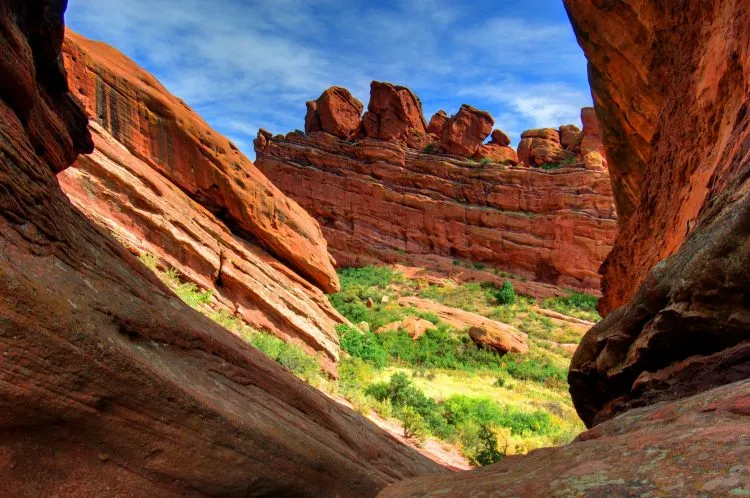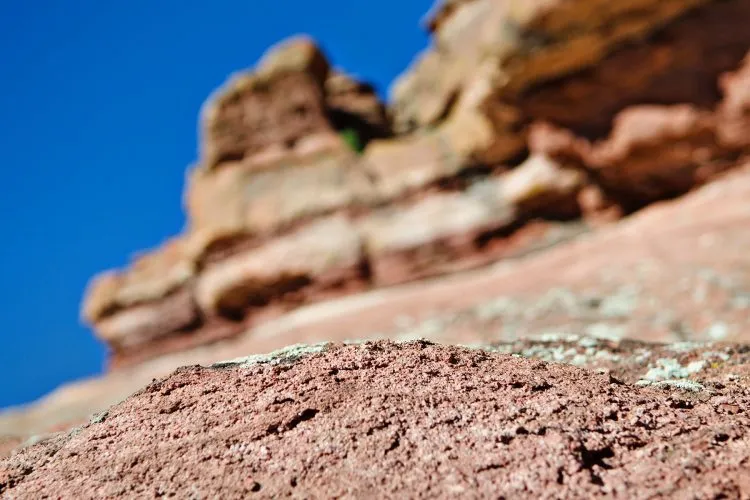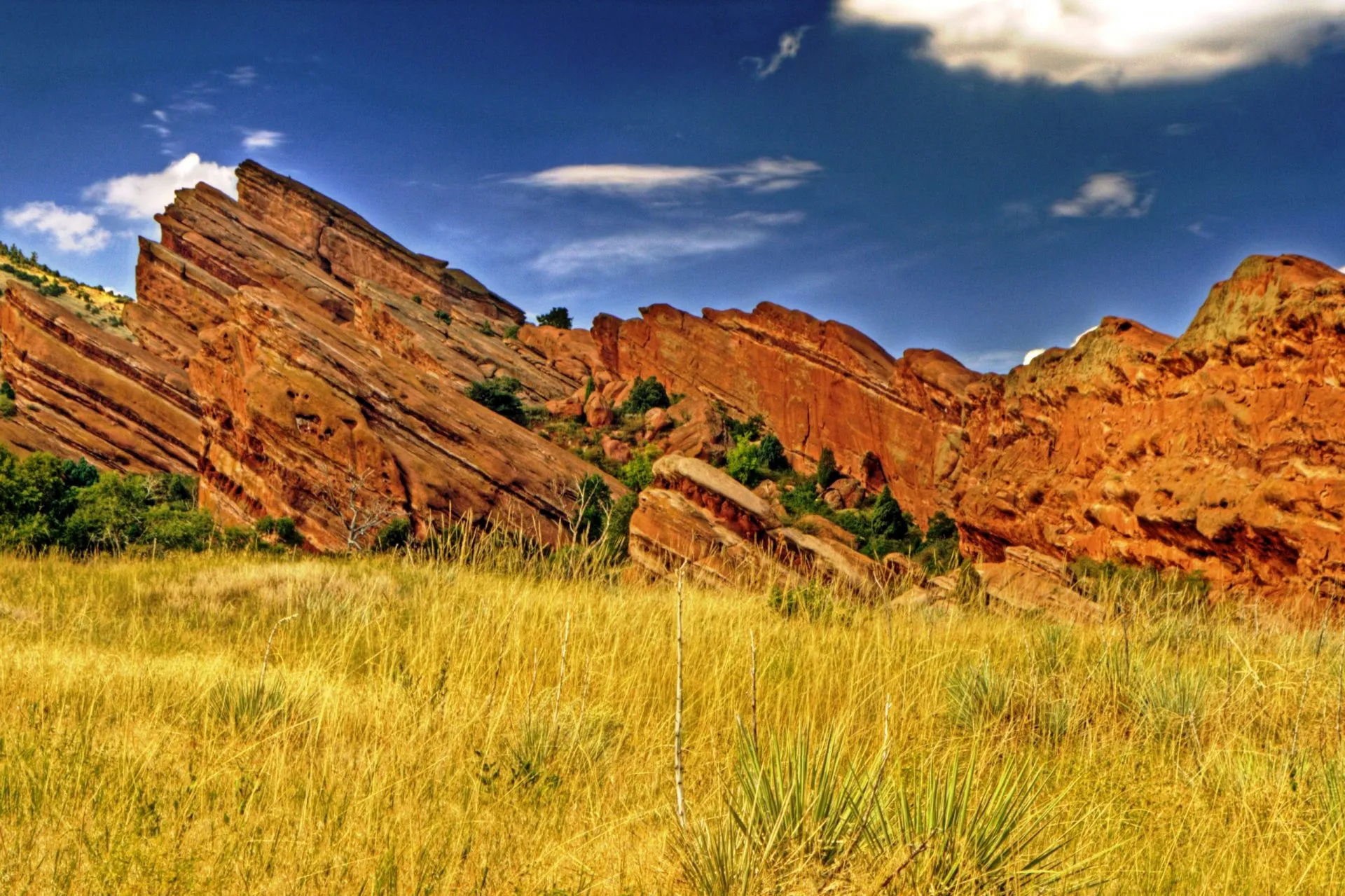Colorado, famed for its majestic mountains, is not only a haven for skiing enthusiasts but also a treasure trove of magnificent glaciers. These glaciers not only contribute to the unique beauty of the landscape but also stand as silent witnesses to millions of years of geological history in this region. Join “Du lịch khắp thế gian” (Travel the World) on an extraordinary journey to explore the glaciers of Colorado, where you can marvel at unspoiled beauty, learn about their formation, and understand their impact on the surrounding environment.
Colorado’s Landscape Formation Over Millions of Years
Present-day Colorado, with its towering mountain ranges, was once an ancient coastal area with sprawling sandy beaches. Over millions of years, changes in sea levels and geological activity sculpted the distinctive sandstone layers. The ancestral Rocky Mountains, predecessors to the current Rockies, rose from the inland sea approximately 300 million years ago. From then on, rivers and glaciers began the process of erosion and creation, shaping the spectacular landscape we see today.
The Fountain Formation, a sedimentary rock layer formed from the erosion of the ancestral Rockies, serves as clear evidence of this process. The colossal rocks in Flatirons, Red Rocks, Roxborough, and Garden of the Gods are remnants of these ancient mountains, sculpted by the power of water, wind, and ice over millions of years.

The Unique Beauty of Red Rocks: Where Geology Meets Art
Red Rocks Park exemplifies the wonders of geology and nature’s creativity. The vibrant red sandstone formations, uniquely shaped, are not only a breathtaking landscape but also a “book” recording the region’s geological history. The intermingling of Fountain sandstone and conglomerate layers creates a multi-colored tapestry, adorned with distinctive veins and patterns.
“Differential erosion,” caused by variations in grain size and rock hardness, has carved out peculiar crevices, pits, and caves, lending an untouched and mysterious beauty to Red Rocks. The characteristic red hue of the rocks originates from the oxidation of minerals like iron, creating large rust-colored swirls that further enhance the allure of this land.

Stone Giants: Ship Rock and Creation Rock
Beyond its colors and unique shapes, Red Rocks is renowned for its colossal, steep, and majestic rock formations. “Ship Rock” and “Creation Rock” stand out as two of the most famous stone giants here. Towering higher than Niagara Falls, they create a magnificent spectacle that leaves every observer in awe.
Red Rocks Amphitheatre, a natural amphitheater nestled among these massive rocks, once listed as one of the Seven Wonders of the World, is a testament to the harmony between natural beauty and human architectural ingenuity. It’s not just a venue for music and arts events but also a Colorado icon, attracting millions of visitors annually.

Journey to Explore Magnificent Glaciers
While Red Rocks doesn’t directly feature glaciers, it’s part of the broader narrative of how glaciers and rivers shaped the Colorado landscape. To truly experience the beauty of glaciers, you need to venture into the higher mountain regions of the state.
Rocky Mountain National Park: Realm of Ice and Stone
Rocky Mountain National Park is an ideal destination for glacier exploration. It boasts numerous small glaciers, glacial lakes, and U-shaped valleys, clear imprints of the ice age. You can hike to glaciers like Andrews Glacier or Tyndall Glacier, admire the pristine beauty of ice and snow, and learn about their formation and environmental impact.
Indian Peaks Wilderness: The Wildness of Glaciated Peaks
The Indian Peaks Wilderness offers another option for those seeking glacier exploration. This area features numerous peaks exceeding 4,000 meters, with small glaciers tucked away in valleys. Consider joining mountaineering tours to explore these areas or simply hike along trails and soak in the majestic scenery.
Glacier Impact and Climate Change
Colorado’s glaciers are not just scenic wonders but also crucial indicators of climate change. In recent years, many glaciers have significantly receded due to rising temperatures. This not only affects water supplies for local communities but can also lead to severe ecological consequences.
Glacier conservation is vital for protecting water resources, maintaining biodiversity, and mitigating the impacts of climate change. Each of us can contribute to this effort by reducing carbon emissions, supporting environmental protection policies, and raising awareness about the importance of glacier preservation.
Conclusion
Exploring Colorado’s glaciers is a memorable adventure, offering a chance to witness nature’s majestic beauty, understand the region’s geological history, and increase awareness about environmental protection. Come to Colorado and discover these magnificent glaciers, the “witnesses” to Earth’s transformations over millions of years.